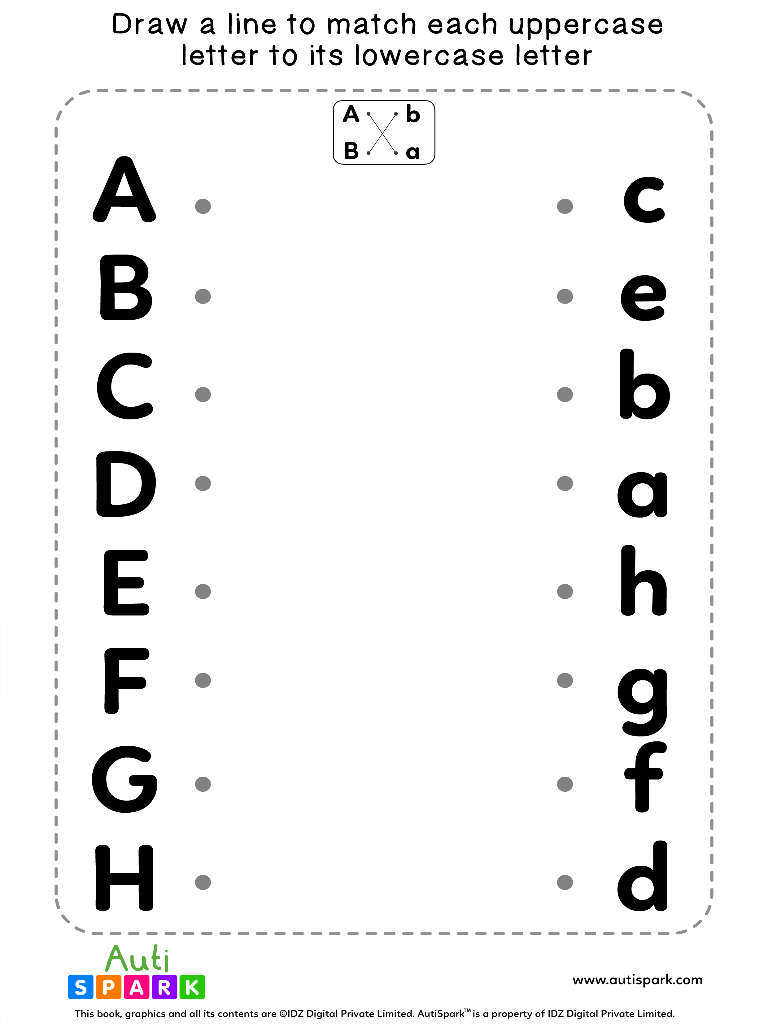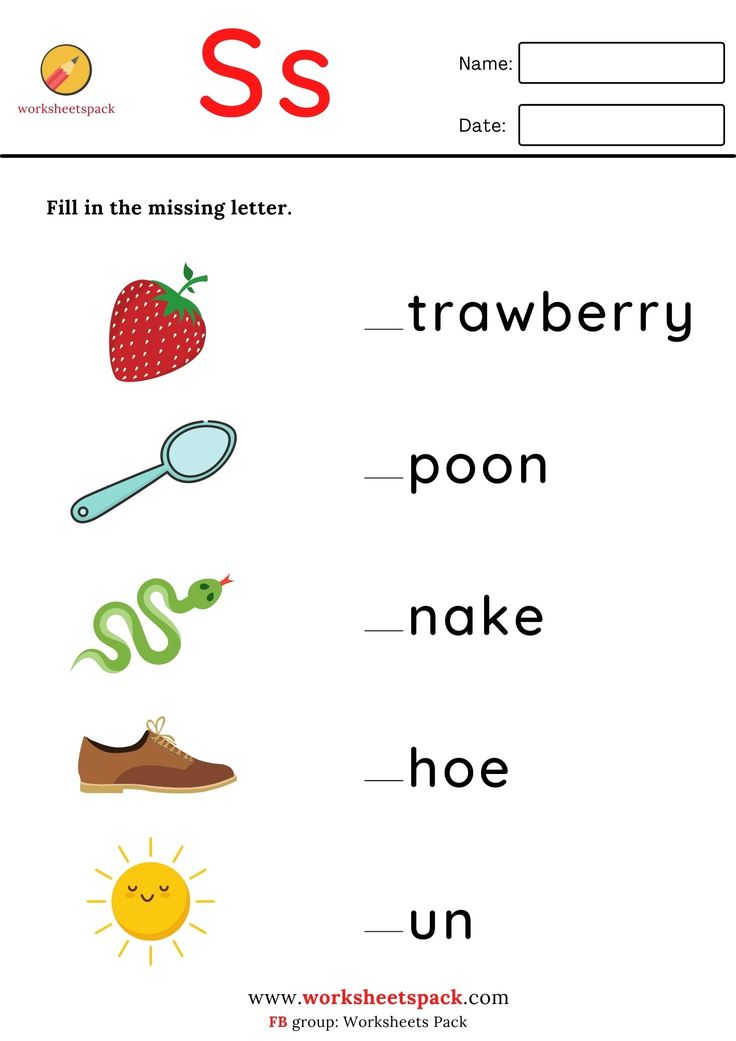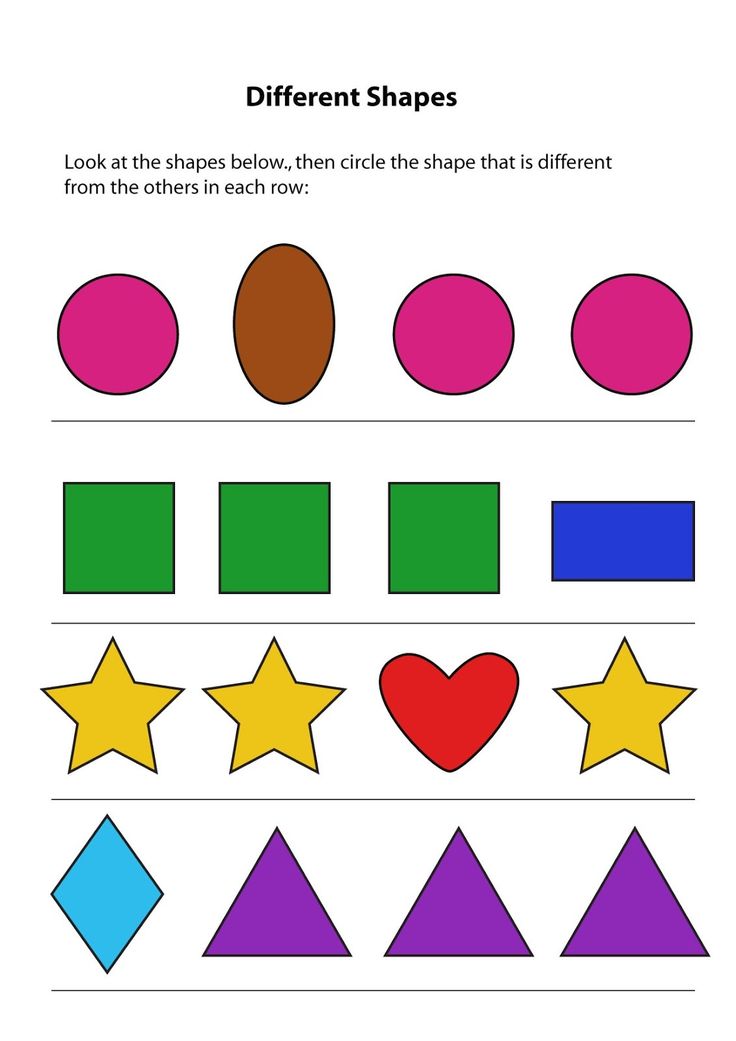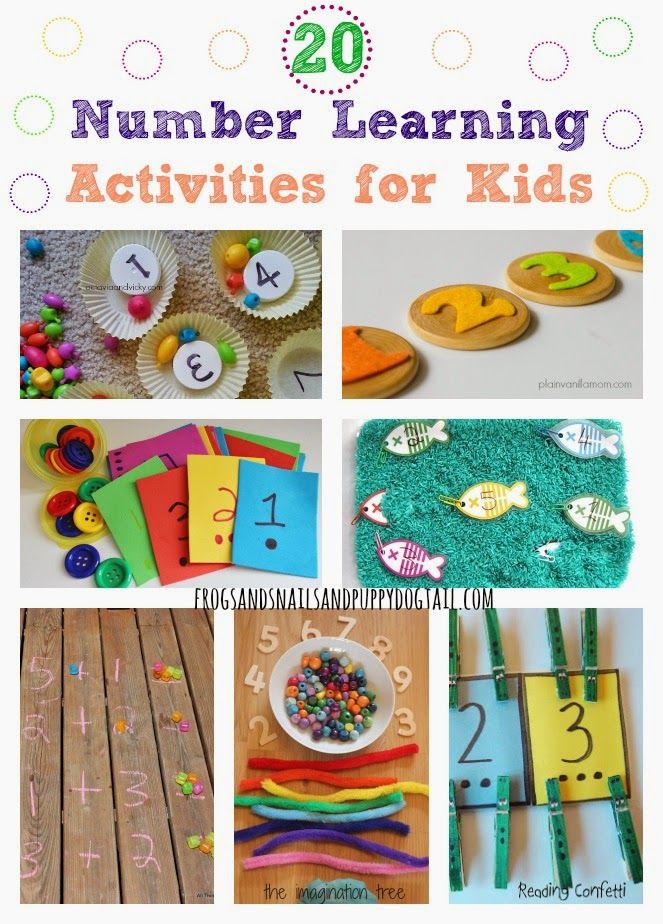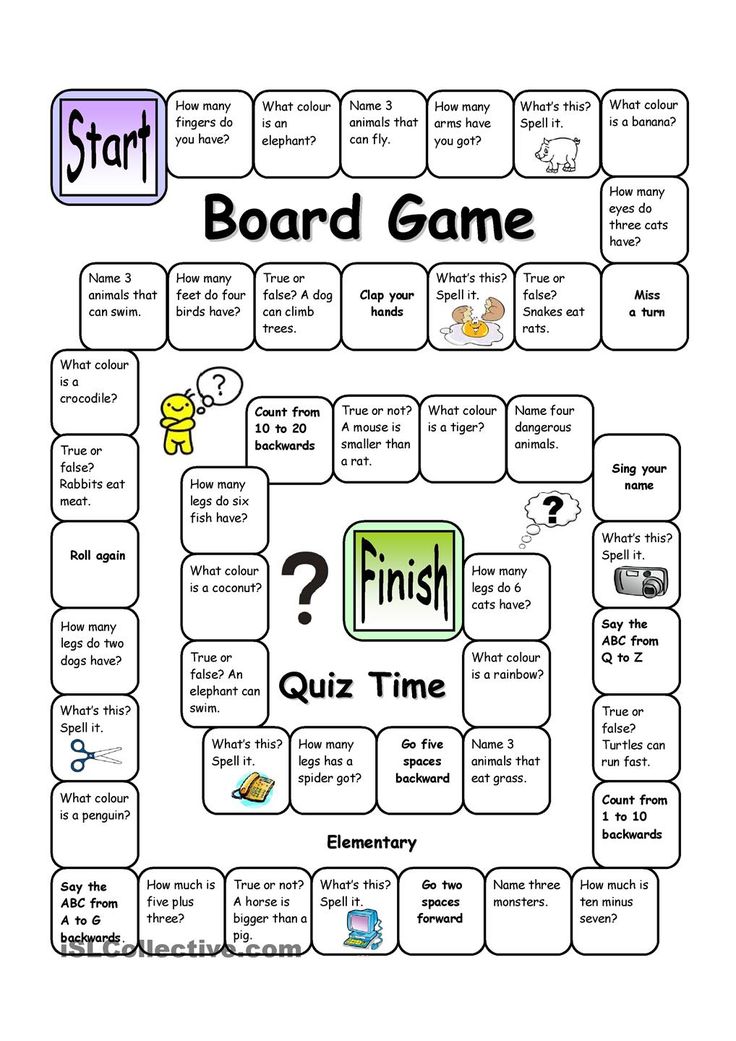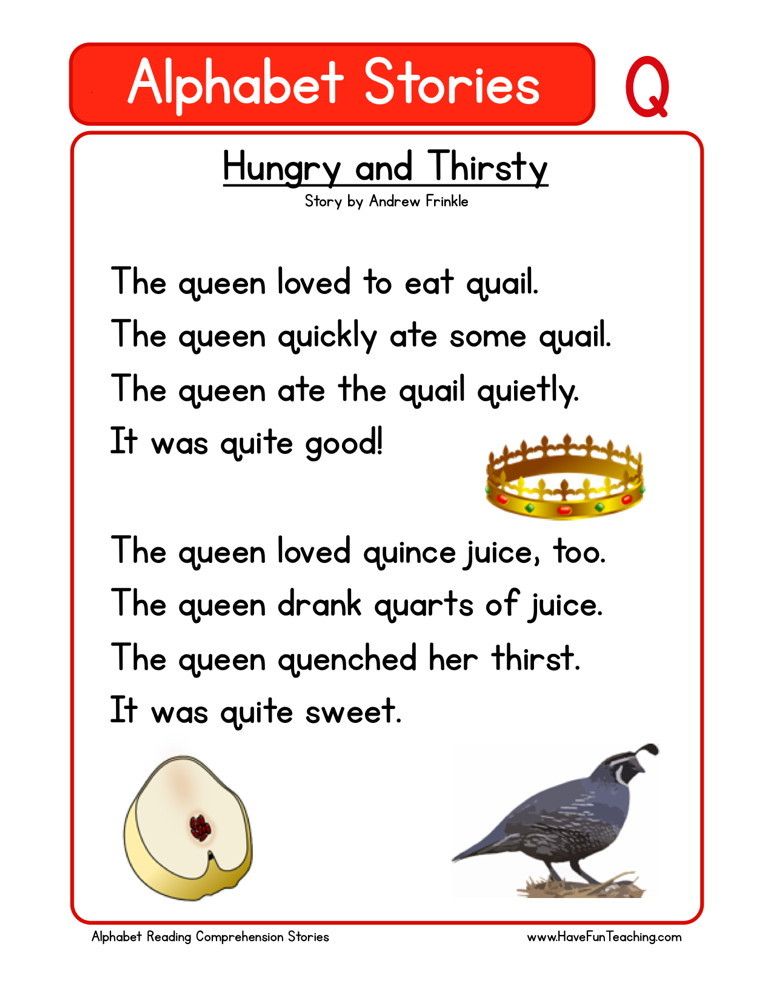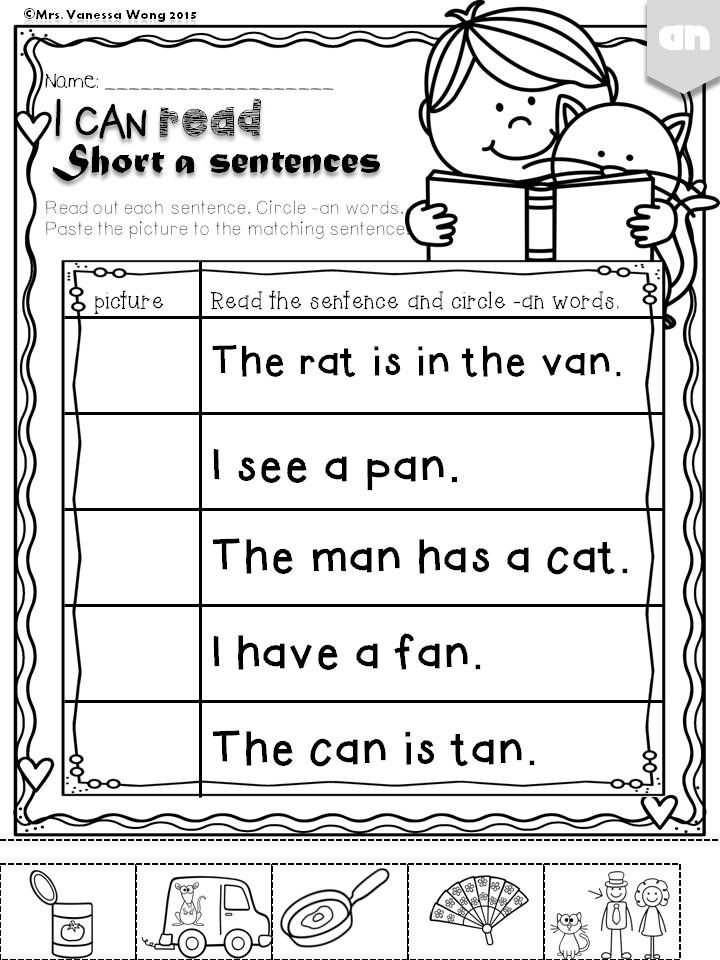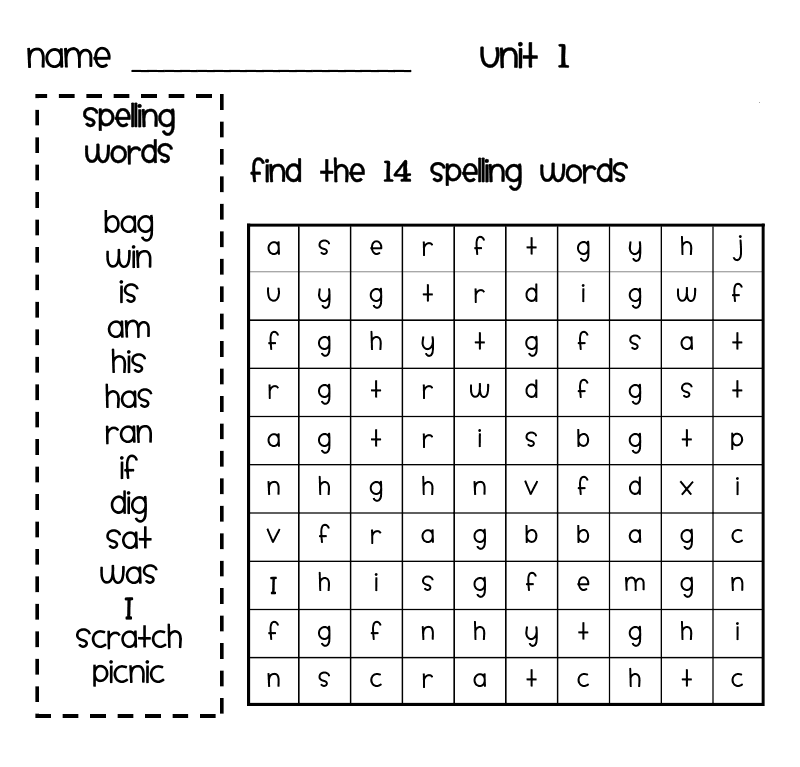Lowercase and uppercase matching
Matching Uppercase and LowerCase Letters
This interactive and hands on game to teach matching uppercase and lowercase letters is a fun gross motor game for preschool and kindergarten. Use this interactive letter activity along as an alphabet matching with objects and a sensory-motor learning activity!
Matching uppercase letters to lowercase letters is a literacy task that supports reading skills, but also challenges visual discrimination skills, form constancy, and visual scanning, all of which are visual processing skills needed for handwriting and reading comprehension. What’s fun about this activity is that it builds these skills in a fun way!
Be sure to grab our color by letter worksheet to work on letter matching, visual discrimination skills.
Matching Uppercase and Lowercase Letters
Learning letters and matching upper and lower case letters is a Kindergarten skill that can be tricky for some kids. We made this easy prep letter identification activity using items you probably already have in the house. If you’ve seen our blog posts over the last few days, you’ve noticed we’re on a learning theme using free (or mostly free) items you probably already have.
We’re sharing 31 days of learning at home with free materials this month along with 25 other bloggers in the 31 days of homeschooling tips series.
Today’s easy letter learning activity can use any letters you have around the house or magnetic letters and coffee filters.
While this activity is almost free if you’ve got the items at home already, we’re sharing the affiliate links for the items in this post.
How to play this interactive letter matching activity
You’ll need just a few items for this letter matching activity:
- Magnetic letters
- marker
- coffee filters (but paper towels or recycled paper would work as well.
To set up the activity, there are just a few steps:
- Grab the magnetic letters from the fridge and 26 coffee filters.
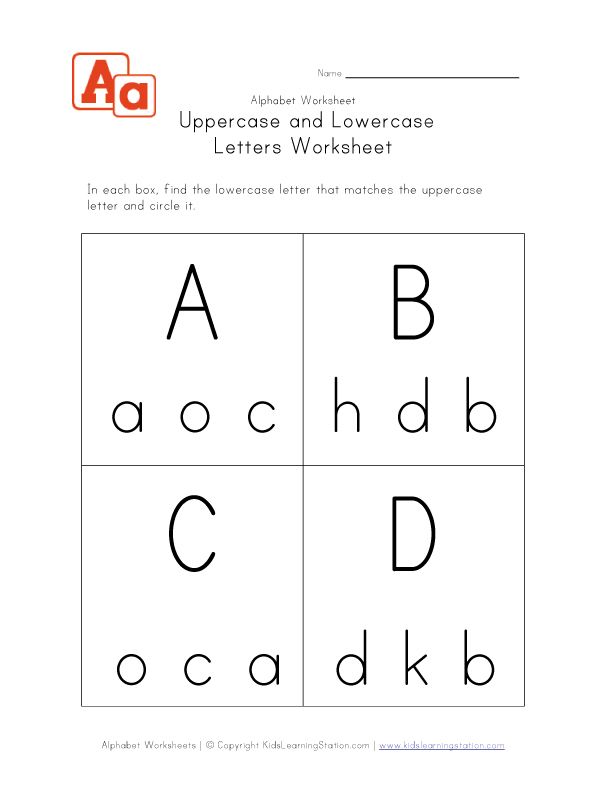
- Use a permanent marker to write one lower case letter of the alphabet on each coffee filter.
- With your child, match the magnetic letters to the lowercase letters on the coffee filters.
- Ask the child to help you crumble each letter inside the coffee filter that has its matching lowercase letter.
- Continue the play!
More ways to match uppercase and lowercase letters
By matching the magnetic uppercase letter to the lowercase letter on the coffee filter, kids get a chance to incorporate whole body movements and gross motor activity while looking for matching letters.
With your child, first match up each lower case coffee filter letter to the upper case magnetic letter.
You can spread the filters out to encourage visual scanning and involve movement in the activity, OR you can stack the coffee filters in a pile and one by one match up the letters. This technique requires the child to visually scan for the upper case magnet letters.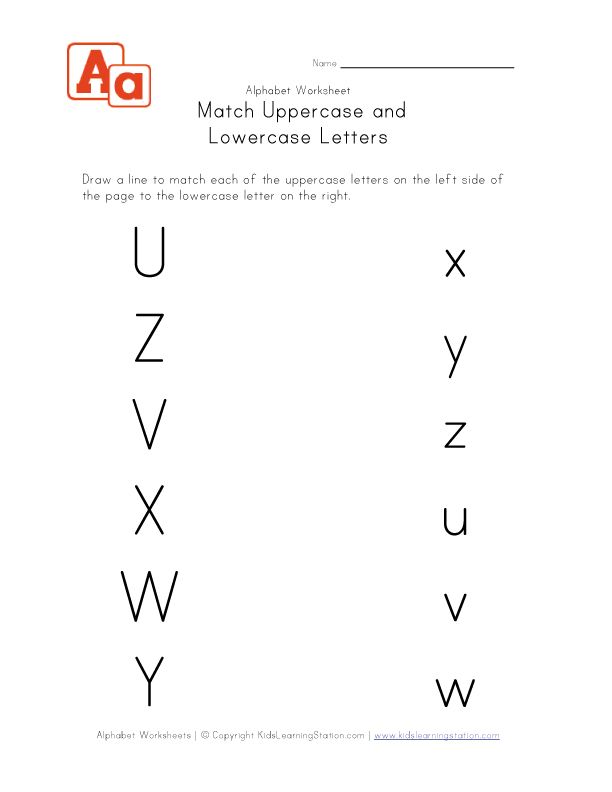
Try both ways for more upper/lower case letter practice!
We then wrapped the coffee filters around the magnets in a little bundle. There are so many games you can play with these upper and lower case letters:
- Match the same letter– match uppercase letters to uppercase letters and lowercase letters to lowercase letters.
- Alphabet matching with objects– Match an object that starts with the letter of the alphabet. Use small objects inside the coffee filter and match it to lowercase letters written in the coffee filter with uppercase magnet letters.
- Match the picture with the letter– Print off pictures of words that start with each letter of the alphabet. Then match the picture with letters of the alphabet using lowercase letters written on the filter and uppercase letters in magnetic letter form.
- Play a letter memory game– Hide letters around the room and challenge kids to find the letters in order to match the uppercase letter to the lowercase letters.
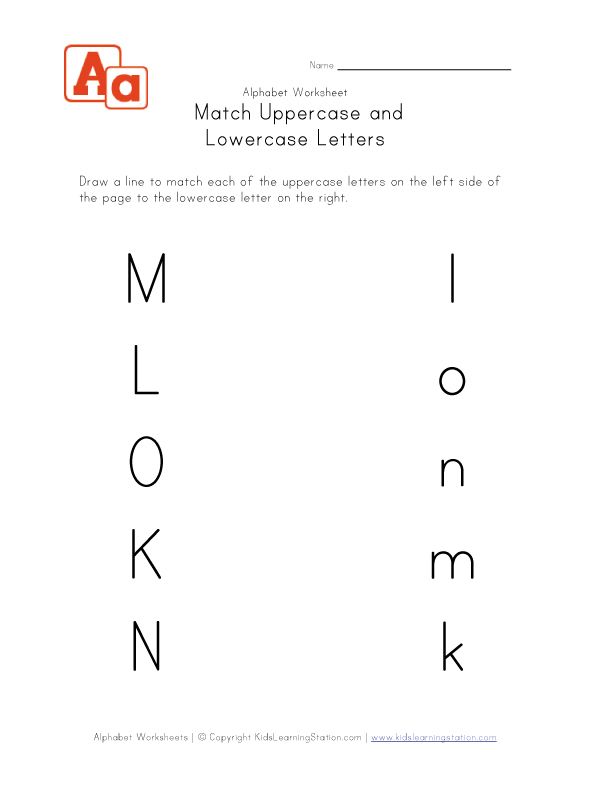
- Letter sound matching– Make a letter sound and challenge kids to find the letter that makes that sound.
- Letter Hide and Seek- Hide the bundled up letters around the room while your child hides his eyes. Send him off to find the letters and ask him to open the bundle and identify the letter.
- Letter Toss Activity- Toss the coffee filter bundles into a bucket or bin. Any letters that make it into the bin are winners!
- Name the letters- Unwrap the bundles and name the letters. Spread the coffee filters out around the room. Toss magnetic letters onto the matching lower case letter.
- Letter toss game- Toss a bean bag onto the coffee filters. The child can identify the lower case letter, then go to the pile of magnetic letters and find the matching upper case letter.
Can you think of any more ways to work on upper and lower case letter matching with coffee filters and magnetic letters?
Matching Big and Small Letters
The nice thing about this activity is that you can teach the concepts of big and small letters.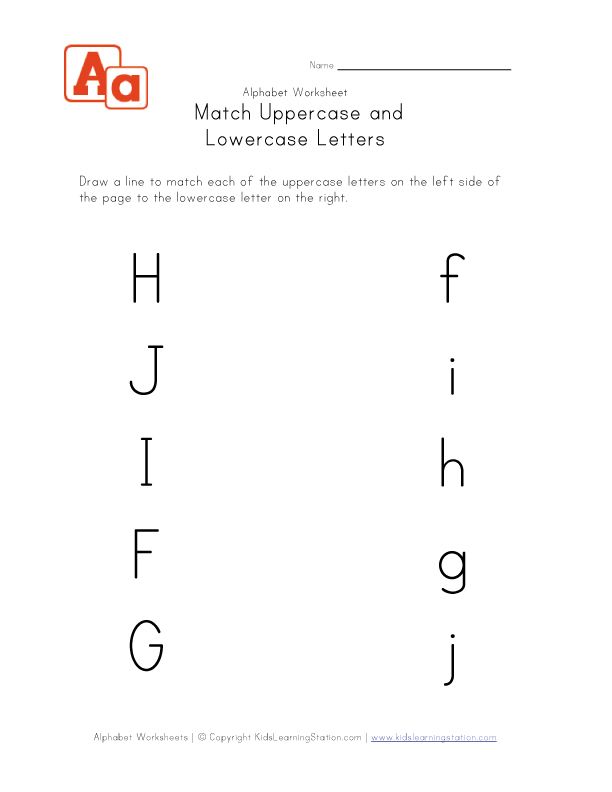 When we say “big letters” and “small letters”, we are showing the concept of letters that touch the top and bottom lines, or the upper case letters.
When we say “big letters” and “small letters”, we are showing the concept of letters that touch the top and bottom lines, or the upper case letters.
And teaching children the difference between those big letters and the small letters which touch just the middle point are part of the visual discrimination process that is needed for handwriting on the lines, or line awareness skills.
You will enjoy more alphabet posts from our archives:
- Hand-eye coordination letter match
- Building letters with baked cotton swabs
Looking for more interactive letter activities to match uppercase and lowercase letters? The Letters! Fine Motor Kit is for you!
Letter Kit for fine motor, visual motor, and sensory motor play.This 100 page printable packet includes everything you need for hands-on letter learning and multisensory handwriting!
This digital and printable packet includes these multisensory handwriting and letter formation materials:
- A-Z Multisensory Writing Pages
- Alphabet Fine Motor Clip Cards
- Cut and place Fine Motor Mazes
- A-Z Cotton Swab Cards
- A-Z Pattern Block Cards
- Fine Motor Letter Geo-Cards
- A-Z Color and Cut Letter Memory Cards
- Color By Size Sheets
- A-Z Building Block Cards
- A-Z Play Dough Letter Formation Cards
- Graded Lines Box Writing Sheets
- Alphabet Roll and Write Sheets
- Pencil Control Letter Scan
- Color and Cut Puzzles
6 Upper and Lower Case Letter Matching Activities for Preschool
Letter matching activities are an excellent way for preschoolers to explore the alphabet.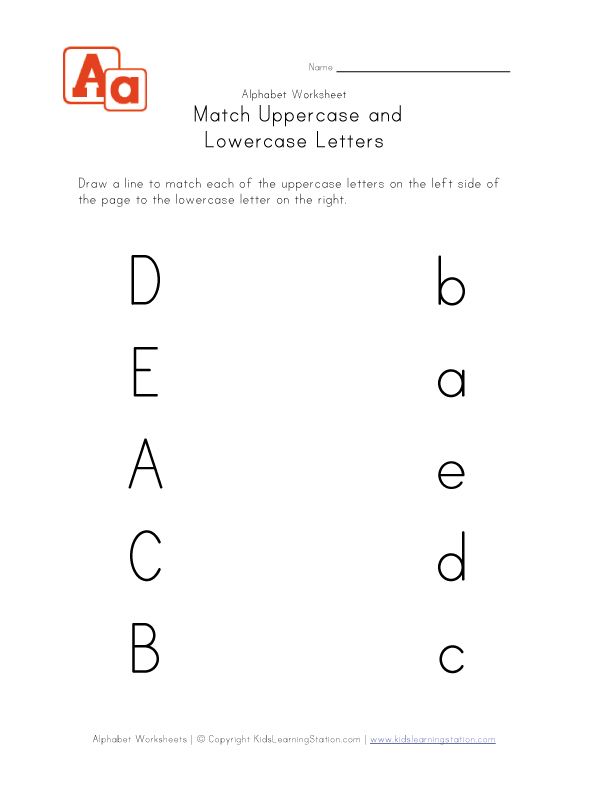 This is a very basic and easy upper and lowercase letter matching activity to reinforce matching letters of the alphabet in a fun way that preschoolers enjoy.
This is a very basic and easy upper and lowercase letter matching activity to reinforce matching letters of the alphabet in a fun way that preschoolers enjoy.
Use this FREE printable upper and lowercase letter matching activity to help solidify letter recognition in your preschool kids to help prepare them for reading.
Don’t forget to grab your FREE upper and lower case letter matching printable at the end of this post!
Free Printable Letter Matching Activity!
Young children are naturally fascinated by the letters of the alphabet. Have you ever been driving when your preschooler points to a stop sign and says, “Look, Mom! S! My name has s in it!”
Even children as young as two years may begin naming and recognizing letters, especially those in their names or those that are frequently found in their environment. (Although let me be clear that is it completely OK if they aren’t). Those are always their favorite letters.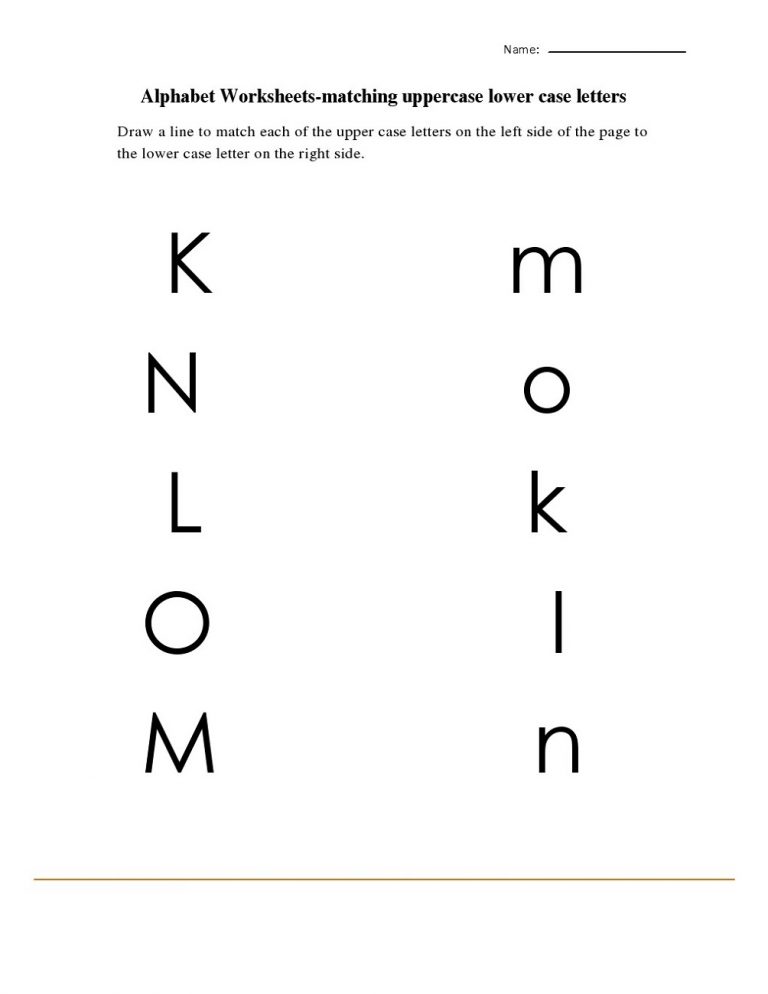
Upper and Lowercase Letter Matching Activities for Preschool
Typically upper case letters are easier for children to learn because the straight lines and familiar “o” shapes are easier for children to recall than lower case letters which are often a mix of various shapes. Take the letter “g” for example. It has an “o” shape, a straight line, and then a hook for the tail. All those together is more difficult for a preschooler to learn than an upper case G which is mostly an “o” shape.
But soon, preschoolers are ready to begin matching upper and lower case letters, and letter matching activities like this one are a great place to start.
This free alphabet printable follows the same letter order as my preschool phonics curriculum. In my phonics lesson plans, preschoolers are introduced to letters in the order of frequency of use in the English language. That way, if you happen to have a preschooler who is developmentally ready to start decoding words, she will already have a handful of sounds that when combined make up a lot of words!
You might also like:
These are posts that teach children how to spell their names, or teach the letters of their name.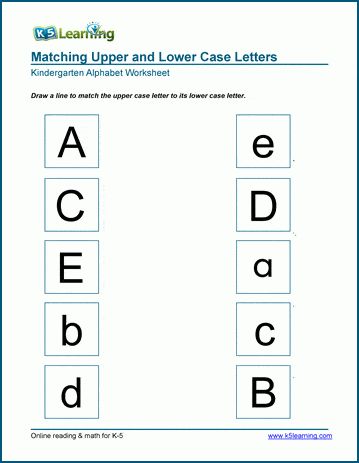
Letter Tile Names – A Name Recognition Activity
Mosaic Letters
Tape Resist Name and Phonics Booklets
Materials for Letter Matching Activities
My favorite letter matching activities are simple and quick to prepare. You only need a few items.
- FREE letter matching printable (found at the end of this post)
- Laminator and laminating pockets (optional)
- Glue sticks
- Tray (This helps preschoolers define their workspace).
Set-Up the Letter Matching Activity
Print out your uppercase and lowercase letter matching printable. (Remember, it’s free and at the end of this post). Cut them into letter tiles. (This is my all-time favorite paper cutter!)
I like to laminate my cards so that kids can use them over and over again, but you can also use glue sticks to glue the letters in place if you don’t want to go to the trouble of laminating the cards. And parents like it when their kiddos bring home a letter identification activity like this one.
Give each child a single grid, 15 corresponding letter tiles, and a glue stick all placed on a tray (skip the glue sticks if you’re doing this activity as a laminated activity).
My little disclaimers for the preparation
Don’t forget to grab your FREE upper and lower case letter matching printable at the end of this post!
To save time (and prevent potential accidents) I cut out the letter tiles in advance for my 3’s class. However, if doing this activity with a 4-5’s class, I would have had the students do their own cutting. (I keep all those kid scissors organized with this colorful caddy.)
Kindergarten teachers really appreciate it when preschoolers have good scissor control. (Need some tips? Check out this post!)
The Letter Matching Activity (with FREE Printable)
The object of the activity comes in two strides.
First, have your students identify each upper case letter on the grid. With the repetition of the four letters throughout the grid, identification of the letters ia solidified.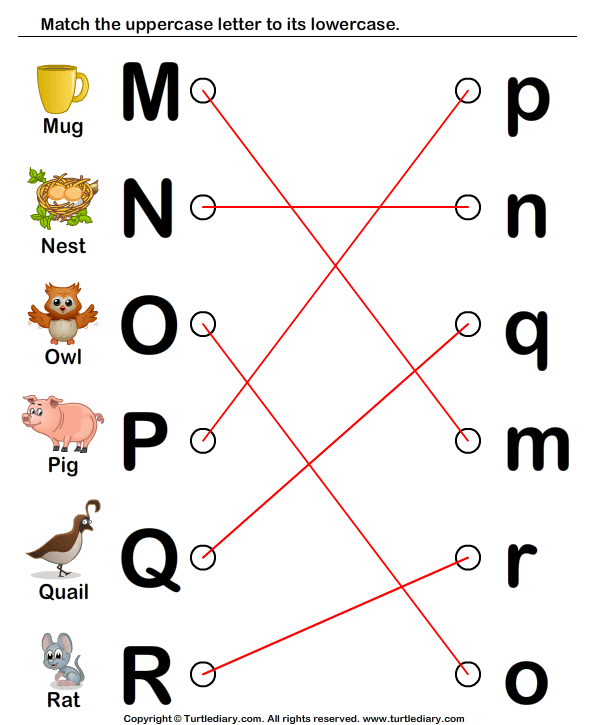
Next, show your students how to identify the lower case letters on the letter tiles and match with the upper case letters by gluing it on the grid.
To prevent random gluing, (as I knew some students would immediately gravitate to), I made an extra copy of the activity and modeled it for the students.
Once I modeled the concept with each letter, I asked the students to help me with the remaining letters. This is a traditional “I Do, Let’s Do it Together, You Do” teaching strategy). This ensured that all students knew exactly what to do when they received their own materials.
I offered this activity to my three-year-old preschool class. While I was expecting it to be difficult for some of my students, it was received rather well.
Surprisingly, our biggest challenge was not the matching of upper and lower case letters. Instead, it was learning to paste the letter tiles on the grid correctly.
You know, put the glue on the back of the tile, not the front, and put the tile right-side-up? Just the little things you wouldn’t think would be a challenge, haha!
More Letter Matching Activities
Don’t forget to grab your FREE upper and lower case letter matching printable at the end of this post!
And more ways to use this printable! After all, a printable is only a good one if it meets your needs, so here are some ways to scaffold the matching activity to different learners.
- Invite individual students to name specific letters as you point to them.
- Challenge your students to also think of something that begins with that letter. (Check out this letter/sound activity, too!)
- For younger learners, have the children sort their letters into piles before they begin gluing. Then they only have to worry about finding one kind of letter at a time. It’s less overwhelming that way.
- Use the letter tiles to spell out sight words or easy CVC words.
- When the grid is completed, invite your preschoolers to find small toys that begin with each letter and place them on the corresponding tiles.
Don’t forget to grab your free printable at the end of this post, and then keep reading for more letter matching activities!
You might also like
These are some of my most popular letter matching activities for preschoolers.
Rainbow Letters Race to the Top (FREE Printable)
I Spy Letters – A Letter Identification Activity for Preschoolers
Alphabet Circle Seek
The Benefits of Letter Matching
Thinking of objects that begin with the letter sound I was pointing to was difficult for the students.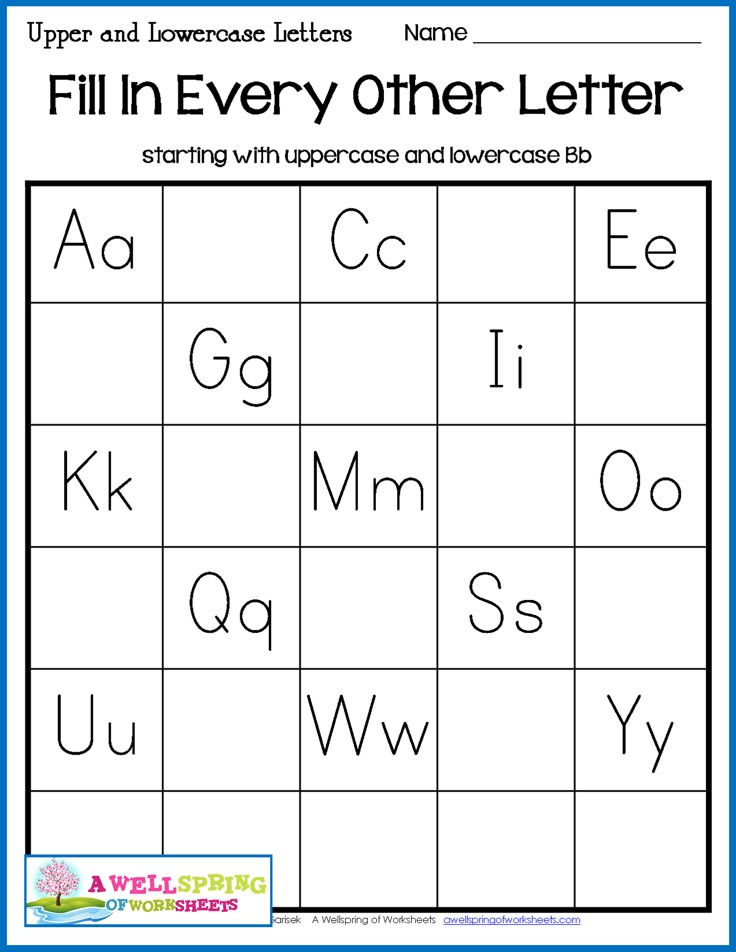 This is because it’s a skill that typically isn’t mastered until late preschool or not even until kindergarten for a lot of children. But this was a quick way for me to informally assess their letter/sound knowledge.
This is because it’s a skill that typically isn’t mastered until late preschool or not even until kindergarten for a lot of children. But this was a quick way for me to informally assess their letter/sound knowledge.
And, when I named a word, my three-year-old students were easily able to identify if that word began with the same letter to which I was pointing. This is just like our sound matching activity I threw together with just a set of animals toys and a lot like our flashcard practice.
This letter matching activity was an effective way to reinforce the letters we had been studying. It was an excellent review and the students were proud of their completed work and put it on display.
You might also like
ABC Letter Stack Game
Letter Sound Matching Activity
Initial Sound Object Matching
Grab Your FREE Letter Matching Printable
Remember, this FREE letter matching printable practices the alphabet in the same order I introduce them in my preschool literacy curriculum, which makes these perfect for each review week!
Don’t forget to keep reading for more letter matching activities!
Looking for More Letter Matching Activities?
You might enjoy these other letter matching printables.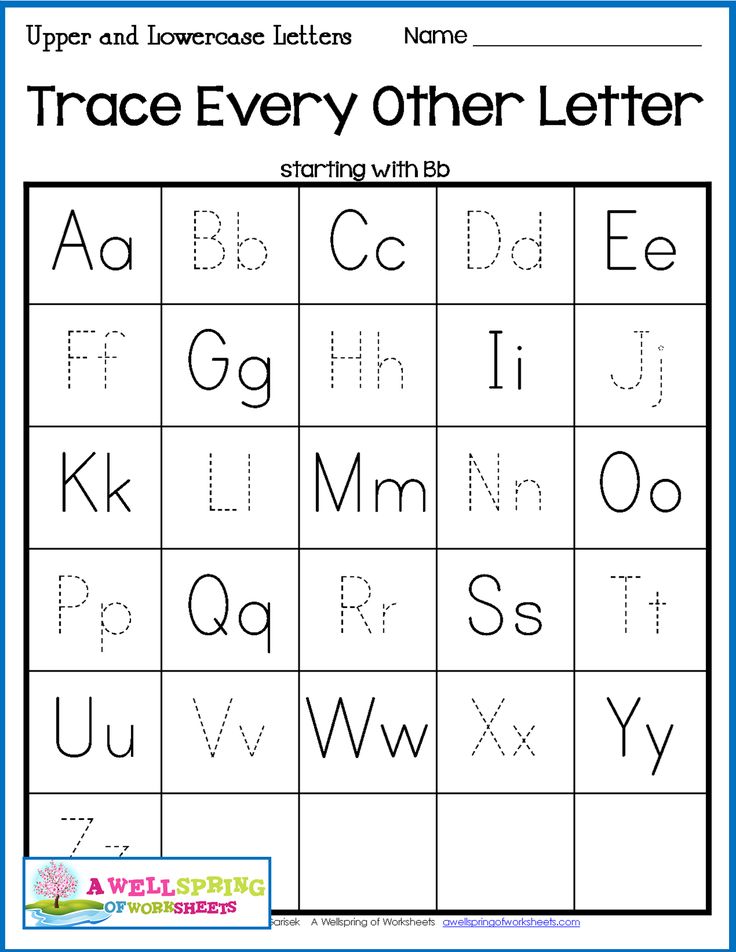 I like to use these as literacy centers.
I like to use these as literacy centers.
Want the Complete Preschool Curriculum?
You’ve got it!
The Complete Preschool Curriculum has everything you need to teach your preschoolers literacy and math in a fun and engaging way, without all the boring worksheets!
This resource includes 36 weeks of:
- oral language lessons
- phonological awareness lessons
- phonics lessons
- math lessons from all five disciplines of math (number sense, algebra, geometry, measurement, and data analysis)
- 10 weekly alphabet, letter formation, and beginning sounds centers
- 72 math centers to support all five disciplines of math
- editable preschool portfolio
- editable preschool portfolio monthly planning checklist
With detailed lesson plans offering an array of daily teaching options, you can cut your lesson planning down to a fraction of the time while still offering your preschoolers the best possible learning experience.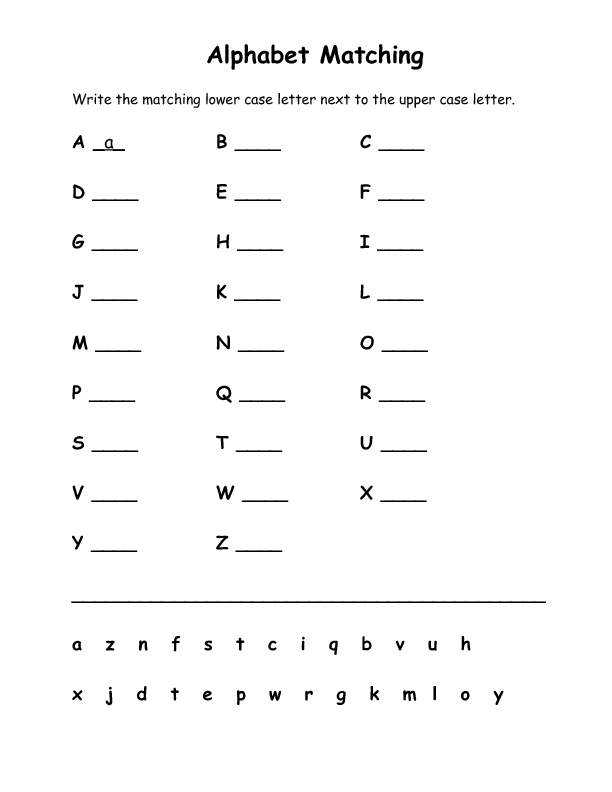
Click the image below to learn more!
Join thousands of others!
Subscribe to get our latest content by email.
We won't send you spam. Unsubscribe at any time. Powered by ConvertKitSarah Punkoney, MAT
I’m Sarah, an educator turned stay-at-home-mama of five! I’m the owner and creator of Stay At Home Educator, a website about intentional teaching and purposeful learning in the early childhood years. I’ve taught a range of levels, from preschool to college and a little bit of everything in between. Right now my focus is teaching my children and running a preschool from my home. Credentials include: Bachelors in Art, Masters in Curriculum and Instruction.
stayathomeeducator.com/
CA1709. Identifiers must have the correct mix of uppercase and lowercase letters - Visual Studio (Windows)
Twitter LinkedIn Facebook E-mail address nine0003
- Article
- Reading takes 2 minutes
Applies to: Visual Studio Visual Studio for Mac Visual Studio Code
| Item | Meaning |
|---|---|
| Rule ID | CA1709 |
| Category | Microsoft.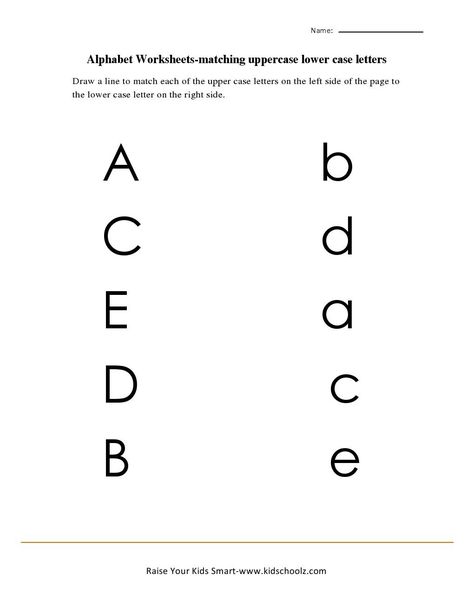 Naming Naming |
| Breaking change | Critical - Occurs in assemblies, namespaces, types, members, and parameters. Non-breaking - when generic type parameters fire. |
Cause
Invalid identifier name.
- or -
The identifier name contains a two-letter abbreviation, and the second is lowercase.
- or -
The identifier name contains an abbreviation of three or more capital letters.
Rule description
Naming conventions provide a consistent look for libraries targeted at the common language runtime. This consistency reduces the learning curve required for new software libraries and increases customer confidence that the library was developed by someone experienced in managed code development. nine0003
By convention, parameter names use camel case, namespace, type and member names, and Pascal case. In a camel case name, the first letter is lowercase, and the first letter of all remaining words in the name are uppercase.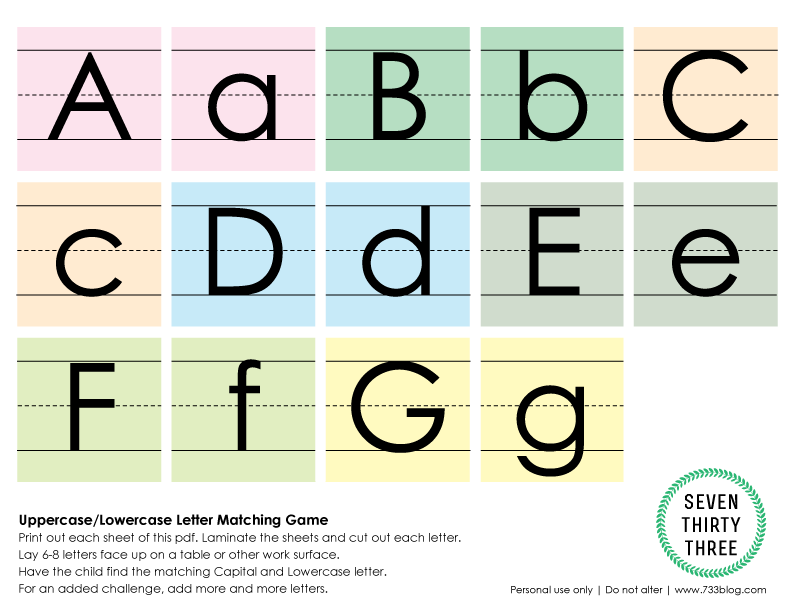 Examples of camel case names are
Examples of camel case names are packetSniffer , ioFile , and fatalErrorCode . In a name with Pascal case, the first letter is capitalized, and the first letter of all remaining words in the name are capitalized. Examples of names with Pascal case are PacketSniffer , IOFile and FatalErrorCode .
This rule splits the name into words based on case and checks all two-letter text against a list of common two-letter words such as "In" or "My". If no match is found, the word is assumed to be an abbreviation. In addition, this rule assumes that it has detected an abbreviation if the name contains four uppercase letters per line or three uppercase letters per line at the end of the name. nine0003
By convention, two-letter abbreviations use all uppercase letters, and abbreviations of three or more characters use Pascal case. The following examples use this naming convention: DB, CR, Cpa, and Ecma.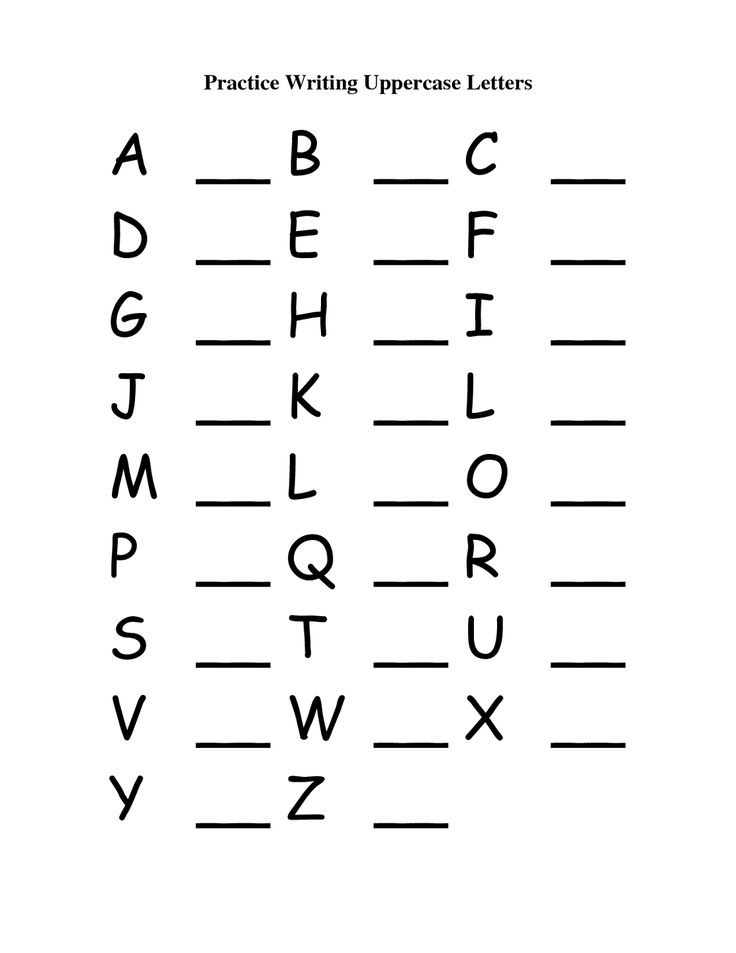 The following examples break convention: Io, XML, and DoD, and for non-parameter names, xp and cpl.
The following examples break convention: Io, XML, and DoD, and for non-parameter names, xp and cpl.
An identifier is a special case to cause a violation of this rule. 'Id' is not an acronym, but an abbreviation of the word 'identification'. nine0003
Troubleshooting
Change the name so that it is correctly registered.
Conditions for disabling warnings
This warning can be disabled if you have your own naming conventions, or if the identifier represents a valid name, such as a company or technology name.
You can also add certain terms, abbreviations, and abbreviations that can be added to a custom dictionary for code analysis. Terms specified in the user dictionary do not cause violations of this rule. For more information, see How to: Customize the Code Analysis Dictionary. nine0003
CA1708. Identifiers must differ in more than just uppercase and lowercase letters
Lowercase and uppercase letters \ Acts, samples, forms, contracts \ ConsultantPlus
- Main
- Legal resources
- Collections
- Lowercase and uppercase letters
A selection of the most important documents on request Lowercase and uppercase letters (regulations, forms, articles, expert advice and much more).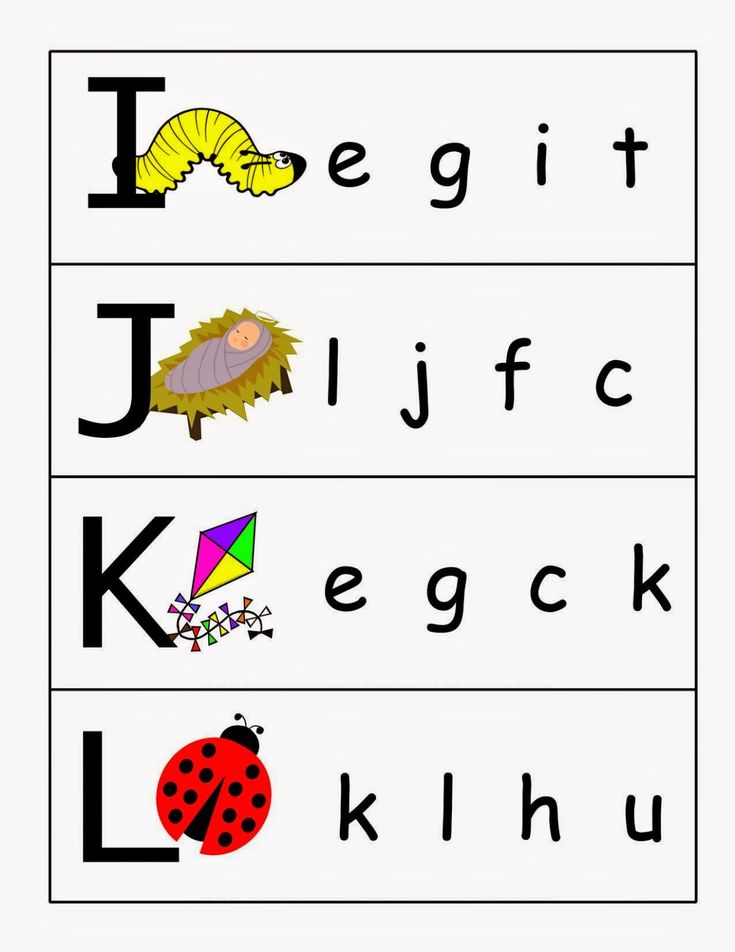 nine0003
nine0003
- Other:
- Supplement with flight crew members
- Agreement on surcharge
- Energy transmission lines
- Preparation of feeds
- Fisheries Sprown Zones
- still ...
Articles, comments, answers to questions 4 uppercase letters
Register and get trial access to the ConsultantPlus system for free for 2 days
Open a document in your ConsultantPlus system:
Guide to Procurement Disputes (44-FZ). Rejection of the application (recognition of the application as corresponding to the procurement documents), if the information in it about the participant (about his name, TIN, location) is recognized as unreliable . The full and abbreviated names indicated on the website of the operator of the electronic site and the application form do not match the data contained in the charter and extract from the Unified State Register of Legal Entities, in terms of the use of lowercase or uppercase letters.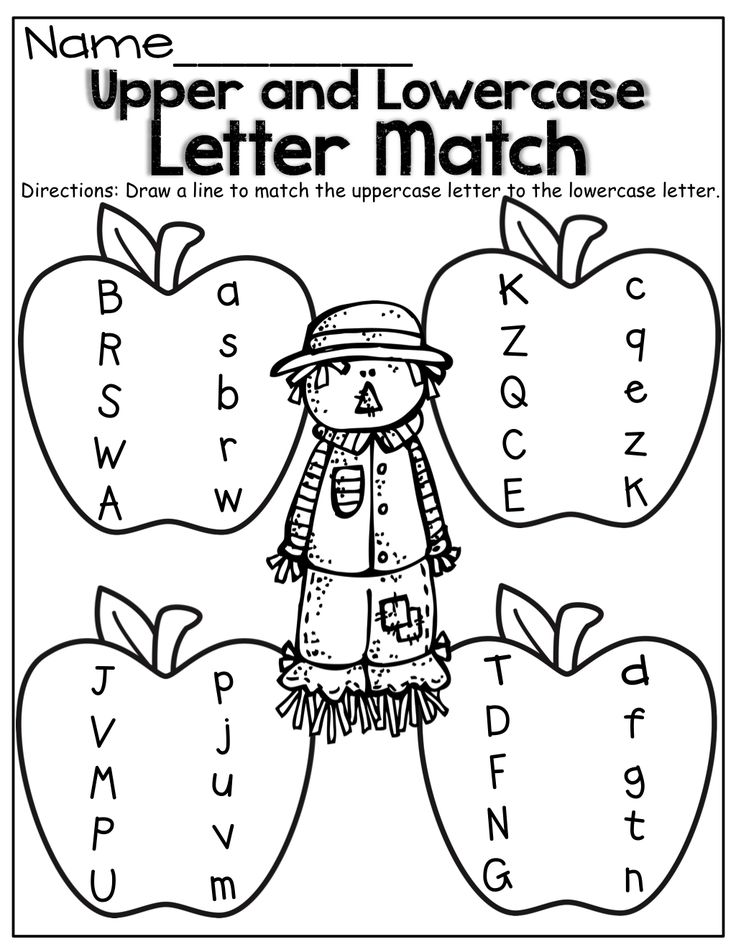 The antimonopoly authority recognized the commission of the customer as violating Part 7 of Art. 69Law N 44-FZ.
The antimonopoly authority recognized the commission of the customer as violating Part 7 of Art. 69Law N 44-FZ.
Register and get trial access to the ConsultantPlus system for free for 2 days
Open a document in your ConsultantPlus system:
Ready-made solution: Name of the seller and the buyer in the invoice2,1025Consultant2 time, if, for example, you replace uppercase letters with lowercase ones, this will not be a violation (clause 2 of article 169 of the Tax Code of the Russian Federation, Letter of the Ministry of Finance of Russia of 18.01.2018 N 03-07-09 / 2238).
Normative acts : Little and capital letters
Register and receive trial access to the ConsultantPlus system Free 2 days
Open the document in your system consultantPli:
The decision of the Council of the Evrazian Economic Commission dated 23.09.20 152
"On the introduction of labeling of electronic cigarettes and similar individual electric evaporative devices by means of identification"
(together with the "Requirements for the format, composition and structure of information on labeled goods transmitted between the competent (authorized) bodies of the Member States of the Eurasian Economic Union and between the competent (authorized) bodies of the member states of the Eurasian Economic Union and the Eurasian Economic Commission, as well as the timing of the transfer of such information") the second group of data (application identifier (21)) - the individual serial number of the goods (packaging of goods), which consists of 13 characters (digits, lowercase and uppercase letters of the Latin alphabet, as well as special characters (!"%&'*+-.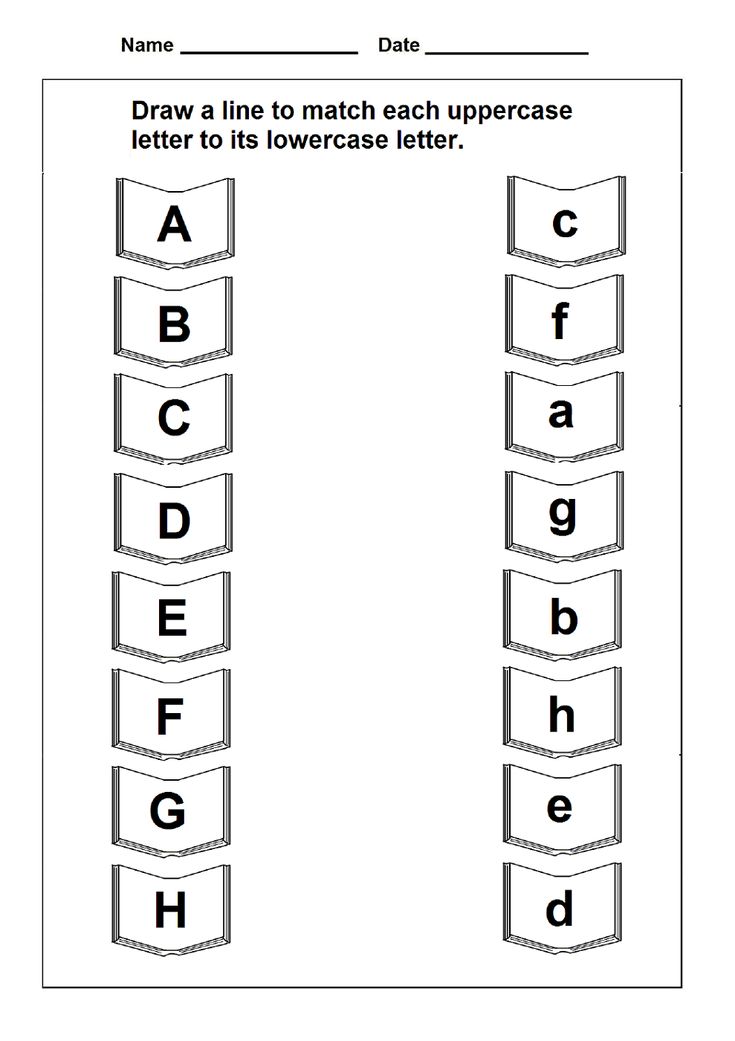 /_,:;=?)). The first character is the identifier of the member state in which this code was issued (1 - the Republic of Armenia, 2 - the Republic of Belarus, 3 - the Republic of Kazakhstan, 4 - the Kyrgyz Republic, 5 - the Russian Federation). As the final character for this group, a special separator character is used, which has the code 29in the ASCII character table;
/_,:;=?)). The first character is the identifier of the member state in which this code was issued (1 - the Republic of Armenia, 2 - the Republic of Belarus, 3 - the Republic of Kazakhstan, 4 - the Kyrgyz Republic, 5 - the Russian Federation). As the final character for this group, a special separator character is used, which has the code 29in the ASCII character table;
Register and get test access to the consultantPlus system free 2 days 2 days
Open the document in your system Consultant Plus:
The decision of the Council of the Eurasian Economic Commission dated 23.12.2020 N 129
(as amended on 02.12.2021)
"On the introduction of labeling of certain types of dairy products by means of identification"
(together with the "Requirements for the format, composition and structure of information on labeled goods transmitted between the competent (authorized) authorities of the Member States of the Eurasian Economic Union and between the competent (authorized) authorities of the states -members and the Eurasian Economic Commission, as well as the timing of the transfer of such information") the second group is identified by the application identifier AI='21', consists of 6 or 8 characters (numbers, lowercase and uppercase letters of the Latin alphabet, as well as special characters (!"% &'*+-.